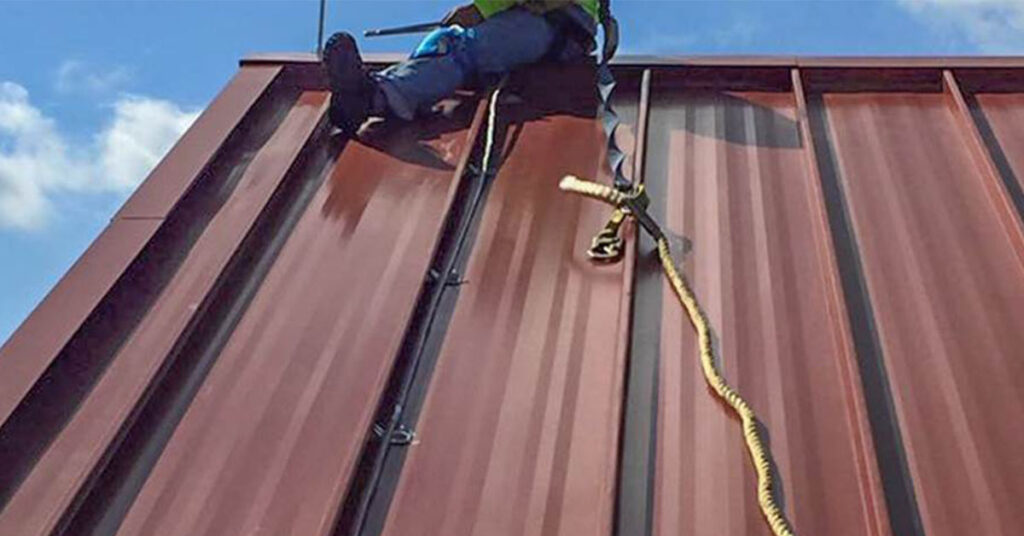In today’s technology-dependent world, the threat of an electromagnetic pulse (EMP) attack has raised concerns among many homeowners and preppers. EMPs, whether from a solar flare or a man-made device, have the potential to disrupt or destroy electronic systems. One common question is : Will a metal roof protect against EMP? This blog will delve into the nature of EMPs, how metal roofs interact with electromagnetic energy, and whether a metal roof can indeed offer protection against an EMP.
What are EMP?
An electromagnetic pulse (EMP) is a burst of electromagnetic radiation that can result from a natural solar flare, a nuclear explosion at high altitude, or specialized EMP weapons.
These pulses generate powerful electrical currents that can overwhelm and damage electrical circuits, potentially leading to widespread power outages and the failure of electronic devices.
EMPs are typically classified into three types:
- E1: A high-frequency pulse that can damage electronics directly.
- E2: Similar to lightning, it’s less damaging compared to E1 but still significant.
- E3: A low-frequency pulse that can induce currents in power lines and long metal conductors, potentially causing transformer damage and long-term power outages.
Will a Metal Roof Protect Against EMP?
The question of whether a metal roof can protect against an electromagnetic pulse (EMP) is complex and depends on several factors related to the nature of EMPs and the properties of metal roofs.
Conductive Properties of Metal Roofs
Metal roofs are made from conductive materials, such as steel or aluminum, which can interact with electromagnetic energy. Metals are excellent conductors, meaning they can channel and dissipate electrical currents.
This property is essential for any material considered for EMP protection, as it helps divert electromagnetic energy away from sensitive electronic devices inside a building.
Shielding Capabilities
A metal roof can act as a partial shield against electromagnetic fields. This shielding capability is similar to the principle behind a Faraday cage, an enclosure made from conductive material designed to block electromagnetic fields.
For a metal roof to provide significant protection, it needs to be continuous, properly sealed, and well-grounded. Grounding is crucial as it allows the roof to safely channel the EMP energy into the earth, reducing the risk of it penetrating the building and damaging electronics.
Practical Considerations
While the idea of a metal roof providing complete EMP protection is appealing, practical considerations must be taken into account:
- Complete Shielding: Achieving full EMP protection requires more than just a metal roof. All potential entry points for electromagnetic energy need to be addressed.
- Backup Systems: Even with a metal roof, having backup systems such as surge protectors, uninterruptible power supplies (UPS), and EMP-resistant electronics can enhance protection.
- Cost and Feasibility: Upgrading to a fully shielded structure can be costly and may not be practical for all homeowners. Assessing the risk and balancing it with the cost is crucial.
Additional Protective Measures
To enhance protection against EMPs, consider the following measures:
- Faraday Cages: Use Faraday cages for critical electronic devices. These can be small enclosures or bags specifically designed to block electromagnetic fields.
- Surge Protectors: Install high-quality surge protectors to guard against power surges caused by EMP-induced currents.
- Backup Power: Invest in backup power solutions like generators or solar power systems with proper EMP protection measures.
- Community Preparedness: Engage with your community to develop a collective response plan for EMP threats. Community-level preparedness can amplify individual efforts.
Read More: Are Roof Coatings Worth It?
Conclusion
A metal roof can offer some level of protection against an EMP, particularly the E2 and E3 components, due to its conductive properties and potential to channel electromagnetic energy away from the structure. However, achieving comprehensive protection against an EMP, especially the high-frequency E1 component, requires a more holistic approach involving continuous shielding, grounding, and addressing all entry points for electromagnetic energy.


